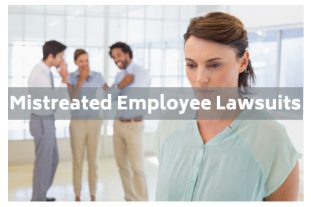 It appears that the current California legal climate is favorable for pursuing mistreated employee lawsuits. If a potential, current, or previous employer has discriminated against or otherwise mistreated you in California, you are in a good position to exact revenge if you so desire. That is because California is well known to be amenable to rectifying the wrongdoing of errant employers Certainly, many factors play in to California’s protective attitude toward wronged employees. The #MeToo movement brought issues related to sexual harassment and retaliation to the forefront of public discussion. Even before #MeToo hit the public airways, though, California legislators were paving the way to an even playing field for anyone involved in a workplace dispute. In fact, the American Tort Reform Foundation went so far as to say that California courts go out of their way to assign responsibility to companies in employer liability lawsuits by allowing for no-injury litigation through PAGA lawsuits, making California the most employee-friendly state in the nation.
It appears that the current California legal climate is favorable for pursuing mistreated employee lawsuits. If a potential, current, or previous employer has discriminated against or otherwise mistreated you in California, you are in a good position to exact revenge if you so desire. That is because California is well known to be amenable to rectifying the wrongdoing of errant employers Certainly, many factors play in to California’s protective attitude toward wronged employees. The #MeToo movement brought issues related to sexual harassment and retaliation to the forefront of public discussion. Even before #MeToo hit the public airways, though, California legislators were paving the way to an even playing field for anyone involved in a workplace dispute. In fact, the American Tort Reform Foundation went so far as to say that California courts go out of their way to assign responsibility to companies in employer liability lawsuits by allowing for no-injury litigation through PAGA lawsuits, making California the most employee-friendly state in the nation.
What is PAGA?
We’ve blogged about PAGA before. PAGA, or the Private Attorneys General Act, gives employees the right to sue their employers civilly for violations of the Labor Code. The process requires a submission of the complaint to LWDA (Labor and Workforce Development Agency) with the potential for an investigation of the matter. Aggrieved employees wishing to pursue civil action are authorized to do so through Labor Code 2698-2699. Some of the requirements for such legal action include:
- Online filing with a copy of the complaint sent to the employer via certified mail;
- Employer responses also filed online, with copies sent to the employee vie4a certified mail;
- Paying required filing fees;
- Waiting up to 60 days for a LWDA review;
- Court approval of settlements, with copies of all judgments provided to LWDA.
Mistreated Employee Lawsuits – Successful Court Cases
Mistreated employee lawsuits have found juries to be sympathetic to their plight in recent years:
- When Allstate Insurance fired a 30-year employee based on his arrest record, that employee fought back in court, ultimately being awarded nearly $3 million in compensation. While roughly one-third of the award was for wrongful termination, the rest was for defamation. But that was just the tip of the iceberg. The jury added another $16 million to the award in punitive damages, sending a clear message to the employer that wrongful termination will not be tolerated.
- When two employees asserted that they had suffered sexual harassment from the general manager of Keyways Vineyard and Winery, things did not end there. After registering their complaint, the women experienced retaliation in the form of being removed from the weekly schedule. A jury awarded the plaintiffs $11 million.



